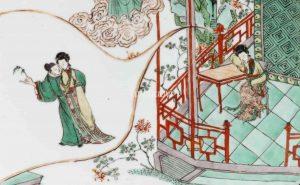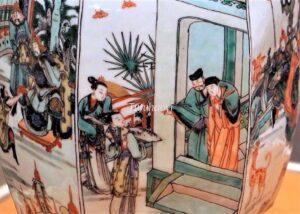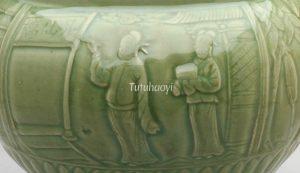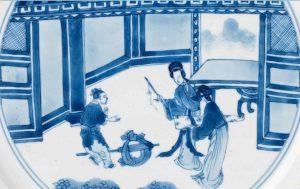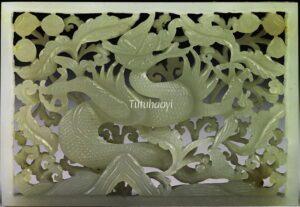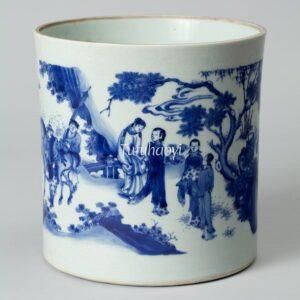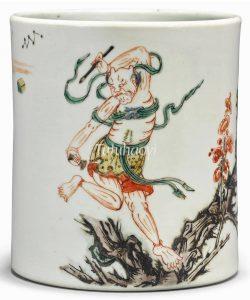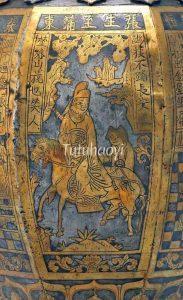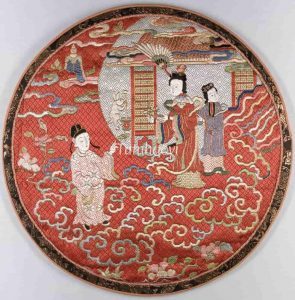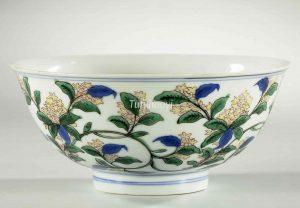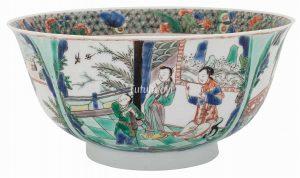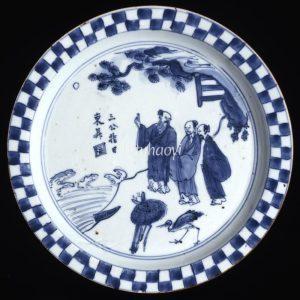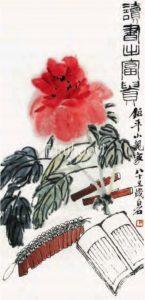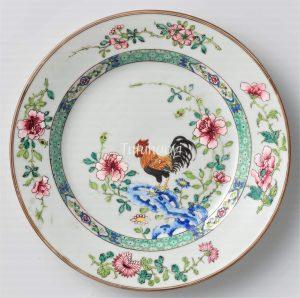Showing Results Containing
In Chinese culture, the Mid-Autumn Moon Festival is related to the legendary fairy Chang E, the Moon Goddess. We often see a hare, her loyal companion, and an osmanthus tree in the picture with her against a background of the Moon Palace. However,...
The Peony Pavilion is a famous play written by Tang Xianzu in Ming Dynasty. There are very few figural paintings depicting this play on Kangxi famille verte porcelain. Dr Yibin Ni first identified the figures and the scene on a porcelain dish in t...
This is a republication of Dr Yibin Ni’s article written in Chinese “明末清初瓷器上张生的‘凝视’和莺莺的挑战”(Gaze from Scholar Zhang and the response from Lady Cui Yingying: a discussion of figural depiction on porcelains from Late Ming to Early Qing dynasty)...
This blog is modified from Dr Yibin Ni’s research work first published on Antiques and Fine Art Magazine. The purpose is to appreciate how Chinese porcelain painters from ancient times passed on classical stories and illustrated traditional morals...
European descriptions of porcelain paintings that have story scenes tend to describe ‘figures and surroundings’, rather than identifying them. Thus, a large part of those beautiful stories intended by pot painters was lost in the description. Here...
In Chinese porcelain painting, it can be tricky to interpret a round disc in the sky as a sun or a moon. Knowledge of Chinese culture and pun rebuses are the keys to explain the meanings of the motifs and scenes correctly. Here are some examples…<...
What is the value of deciphering pictorial scenes on traditional Chinese artworks? What is the importance in identifying correct figures and story scenes on antiques? Here is the editor’s conversation with Dr Yibin Ni, an internationally ren...
This is Scene three of Act Four of The Romance of the Western Chamber (Xixiang Ji 西厢记), a famous Chinese drama written by playwright Wang Shifu 王实甫 (1250–1336) in Yuan dynasty.
Zhang Gong 张珙 (styled Junrui 君瑞, also known as Scholar Zhang), and Madame Cui’s daughter, Cu...
As the deity who grants success in the imperial examinations, Kui Xing 魁星 is revered as the God of Literature. The image of Kui Xing is often presented as a ...
During the Tang and Song dynasties, there were large dragon–carp (鳌鱼) reliefs on the steps in front of the imperial palace. In t...
The term ‘Kui Xing’ originally referred to the North Star (北斗 Bei Dou). As stated in the Historical Records by Sima Qian (司马迁 145BCE – ?) , ‘Kui is the first star of the Great Dipper constellation’. Therefore, Kui also carries the meaning of being the first.
Gu Yanwu (顾炎武 1613–1...
Young scholar Zhang Junrui (张君瑞, also called Zhang Sheng 张生) is the male protagonist in the famous ancient Chinese play, Romance of the Western Chamber (西厢记 Xixiang j...
‘True love conquers all’ is the theme of the Peony Pavilion (牡丹亭 Mudan Ting), a musical play of fifty-five scenes written by Tang Xianzu (汤显祖, 1550–1616) in Ming...
The Ming-dynasty play The Story of the Blue Robe (青袍记 Qingpao ji, also called《梁氏父子传胪记》) tells the story of how Lv Dongbin (吕洞宾 Lü Dongbin or 吕纯阳), one of the Continue Reading
‘Sima Xiangru Inscribing on the Bridge Gateway (相如题桥)’ was a popular theme in theatre from at least the Song (960–1279) through to the Qing (1644–1911) dynasty. Sima Xiangru (司马相如) was a Western Han (202 BCE – 8 CE) scholar unsuccessful in making a career in civil services. However, Wang Ji, the magistrate of Linqiong co...
Ordinary fish in the pond was hoped by ancient Chinese people to turn into a vigorous and powerful Continue Reading
The osmanthus tree prominent in the Moon Palace came to be a symbol for elite talents in the Jin dynasty 晋朝 (265-420). In around Tang dynasty (618-907), ‘plucking a s...
Osmanthus blossoms in autumn and is conventionally regarded as the flower of the eighth month of the Chinese lunisolar calendar. Its sweet scent is discreet, distinctive, and unforgettable, and has a legendary position in Chinese poetry and art. It is associated with the moon because ancient Chinese wanted to explain the...
This is a story from the Romance of the Western Chamber, a famous Chinese play written by Wang Shifu (王实甫, 1260-1336) in Yuan dynasty (1271-1368):
On his way to the capital to take civil-service exams, Scholar Zhang (张生) fell in love with the beautiful Cui Yingying (崔莺莺), who was stranded in a monastery. ...
The action of ‘pointing to the sun’ is termed in Chinese as ‘指日 zhi ri’, which sounds and looks exactly the same as (both homophone and homograph of) the phrase ‘指日 zhi ri’ meaning ‘in a few days’ time’. The state of ‘something rising high up’ is ‘高升 gao sheng’ in Chinese, which may be metaphor...
Book is a symbol of education or examinations.
Peony is a symbol of wealth and prestige.
The motif combination of book and peony sends a ...
The Chinese phrase ‘Gong ming 功名’ for ‘scholarly honour or official rank’ is a pun on two Chinese characters ‘gong 公’ and ‘ming 鸣’.
‘Gong 公’ from ‘gong ji 公鸡’, the Chinese name for ‘rooster’, makes pun on the Chinese word ‘gong 功’; and ‘ming 鸣’, which ...

